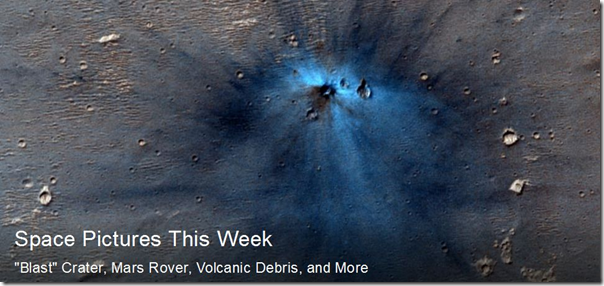
Space Pictures This Week: "Blast" Crater, Mars Rover, More
By Andrew Fazekas, National Geographic News, 22 August 2012.
By Andrew Fazekas, National Geographic News, 22 August 2012.
1. System Check
NASA's Curiosity rover snapped this close-up view of its tool turret flexing its seven-foot-long (two-meter-long) robot arm on August 20 - the first time since landing on the red planet about two weeks ago.
The car-size robotic geochemist conducted a series of health checks on itself, including unfolding its arm and making sure all five of its joints are in working order.
Like a hand, at the tip of its appendage is a 2-foot-wide (0.6-meter-wide), 70-pound (32-kilogram) turret of five tools that will be used to collect and analyze rock and soil samples on Mars.
2. "Stunning Sky Show"
A Perseid meteor streaks over New Jersey's East Point Lighthouse in a picture submitted August 16 to National Geographic's Your Shot community.
Photographer Jeffrey Berkes waited most of the night to catch a glimpse of the Perseids.
"As dawn approached, a stunning sky show revealed itself," he said with his submission.
3. Impact Crater?
While NASA's rover prepares to learn about Martian history from ground level, orbiting satellites are studying the planet's landscape from hundreds of miles above.
Taken in 2011 by NASA's Mars Reconnaissance Orbiter and released this week, the above image showcases a new-found dark spot with what looks like a rayed blast zone.
The fact that the dark spot did not exist in images taken two years earlier suggests it's a tell-tale sign of a fresh impact crater, scientists say.
4. Volcanic Debris
A brown ribbon of pumice from an undersea volcano floats on the surface near the Kermadec Islands, northeast of New Zealand, in an August 13 satellite picture.
NASA's Terra satellite captured the progress of the pumice raft, which emerged July 28 and gradually dispersed over an area of at least 280 miles (450 kilometres).
5. Stellar Line Up
Photograph by Alex Cherney, TWAN
A stone chapel under a myriad of stars and the brightest planets highlight this view from Lake Tekapo Starlight Reserve on New Zealand's South Island.
The two brilliant star-like objects, planets Jupiter (far left) and Venus, shine like beacons next to the famed Orion, the hunter constellation in one of the most unpolluted skies found on the globe.
In 2009 UNESCO designated Lake Tekapo as the world's first internationally recognized dark-sky conservation park.
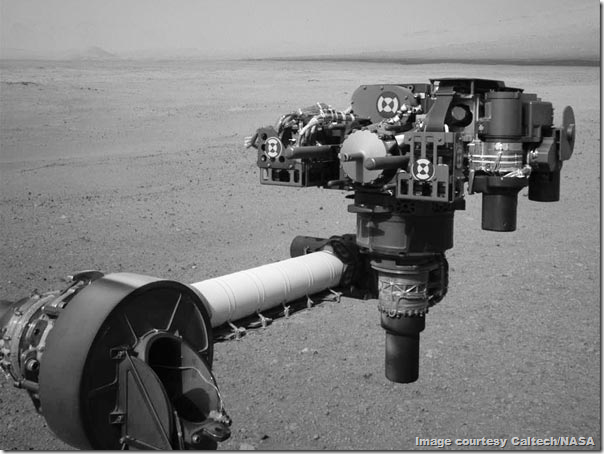
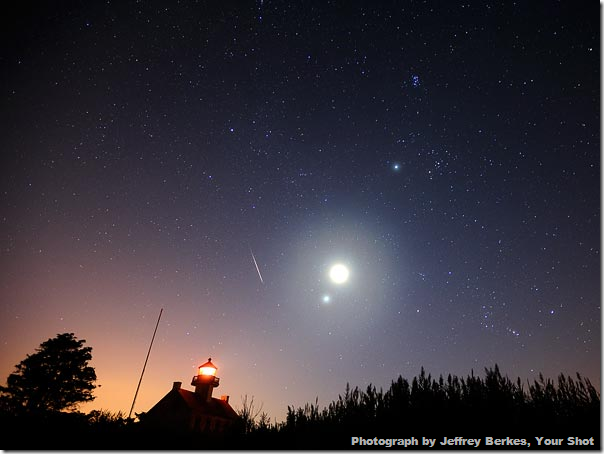
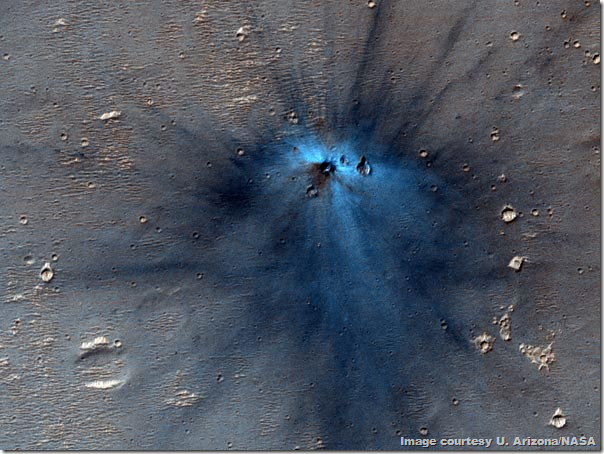

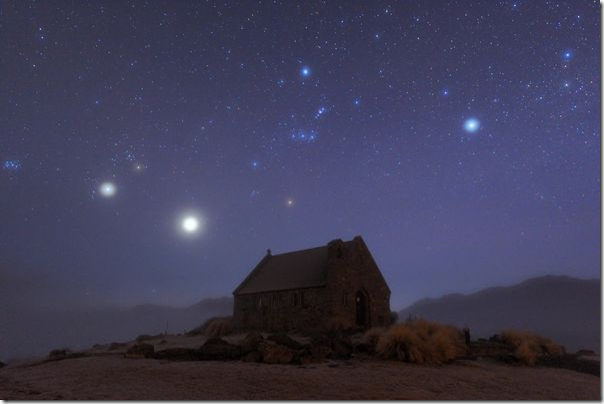
No comments:
Post a Comment
Please adhere to proper blog etiquette when posting your comments. This blog owner will exercise his absolution discretion in allowing or rejecting any comments that are deemed seditious, defamatory, libelous, racist, vulgar, insulting, and other remarks that exhibit similar characteristics. If you insist on using anonymous comments, please write your name or other IDs at the end of your message.